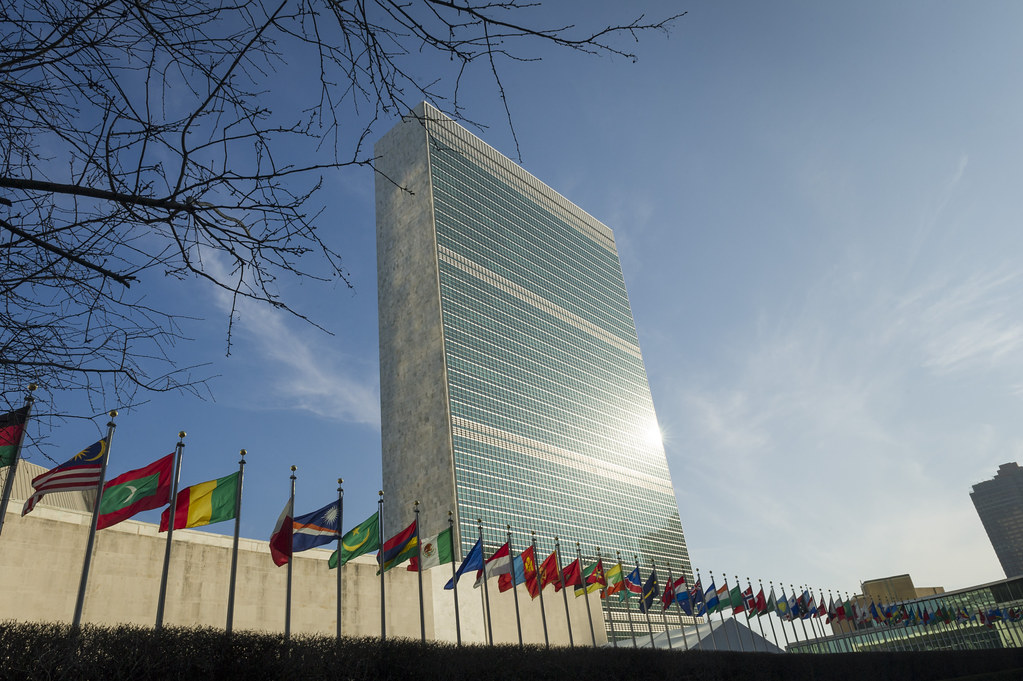DOWNLOAD PDF
THE ISSUE
How to better integrate and have human rights play a central role in U.S. foreign policy has always been a vexing issue met with controversy, however over the years it has increasingly been institutionalized throughout the U.S. government.
The U.S. Department of State currently has a Bureau of Democracy, Human Rights, and Labor which houses the largest amount of human rights personnel within the U.S. government. This position was not always its own Bureau, but that started to change in 1975, when the Executive Branch created the first Coordinator for Human Rights and Humanitarian Affairs. In 1977, then-President Jimmy Carter appointed the first Assistant Secretary for Human Rights and Humanitarian Affairs and established the Bureau of Human Rights and Humanitarian Affairs. In 1994, the Bureau was then reorganized and renamed as the Bureau of Democracy, Human Rights, and Labor (DRL).
The prioritization of human rights within the National Security Council staff is also important because they organize senior-level interagency meetings, prepare agendas, define issues ready for action and are often viewed as key interlocuters to the President. In 1993, then-President Clinton appointed under the National Security Council staff a director for human rights under the Office of Global Issues and Multilateral Affairs.
Under President Bush the human rights position was housed under the office of Democracy, Human Rights, and International Operations, and under President Obama under the office of Multilateral Affairs and Human Rights. Under President Trump, the issue was de-prioritized, and the office was renamed as covering international organizations and alliances.
In the last several decades, the role that other agencies play in foreign policy increased dramatically, however, human rights personnel and funding has not kept up to match. The Department of Defense for example has increased its involvement in operations other than war, such as stability operations and security cooperation. In 1995, the U.S. Southern Command established a Human Rights Office to promote observance of human rights in the Western Hemisphere and to advise the commander on the issue. The Treasury Department oversees the Global Magnitsky program and other legal authorities that use financial tools to put pressure on human rights violators and corrupt officials. The Department of Justice, the intelligence community and a litany of smaller foreign assistance agencies all play an increased role in shaping U.S. foreign policy.
TALKING POINTS
- Most Presidents that have come before me have relegated human rights issues to an afterthought, especially when they converge with security and economic interests. However, the link between human rights and national security is clear – and our foreign policy should reflect that.
- Having a foreign policy that is in accordance with international human rights law and is a promoter of human rights abroad will require a national security apparatus that can implement and shape it. That is why I am announcing several personnel and institutional reforms that I believe will help ensure human rights is at the core of our decision-making.
RECOMMENDATIONS
The next U.S. Administration should establish and expand on human rights personnel, funding, and expertise within the various national security institutions. For example:
- Establish a Senior Directorate role that oversees human rights policy for the National Security Council staff as a special assistant to the President, with six staff supporting it.
- Establish a human rights initiative to enforce compliance with international human rights obligations, at each of the other geographical combatant command with similar mandate as the one in the U.S. Southern Command.
- Establish a Human Rights Office at the Director of National Intelligence, whose mission is to enforce compliance with international human rights obligations.
- Increase the capacity of human rights personnel at the Treasury Department.
- U.S. Embassies located in proximity to high priority human rights hotspots and crises should have a senior-level human rights officer who reports directly to DRL and the regional bureaus.
- The Director General of the Foreign Service should require that Foreign Service Officers have at least one assignment where human rights are part of their portfolio.
- Identify and encourage a liaison within every other agency a designated human rights officer whose job is to ensure compliance with international human rights obligation.
- The President should direct the Executive Branch to identify a human rights strategy for every region, with DRL taking the lead. It should also provide necessary human rights expertise, staff, and funding for human rights initiatives under DRL.
FOR MORE INFORMATION, PLEASE CONTACT:
Joanne Lin
National Director, Advocacy & Government Affairs
(202) 509-8151
